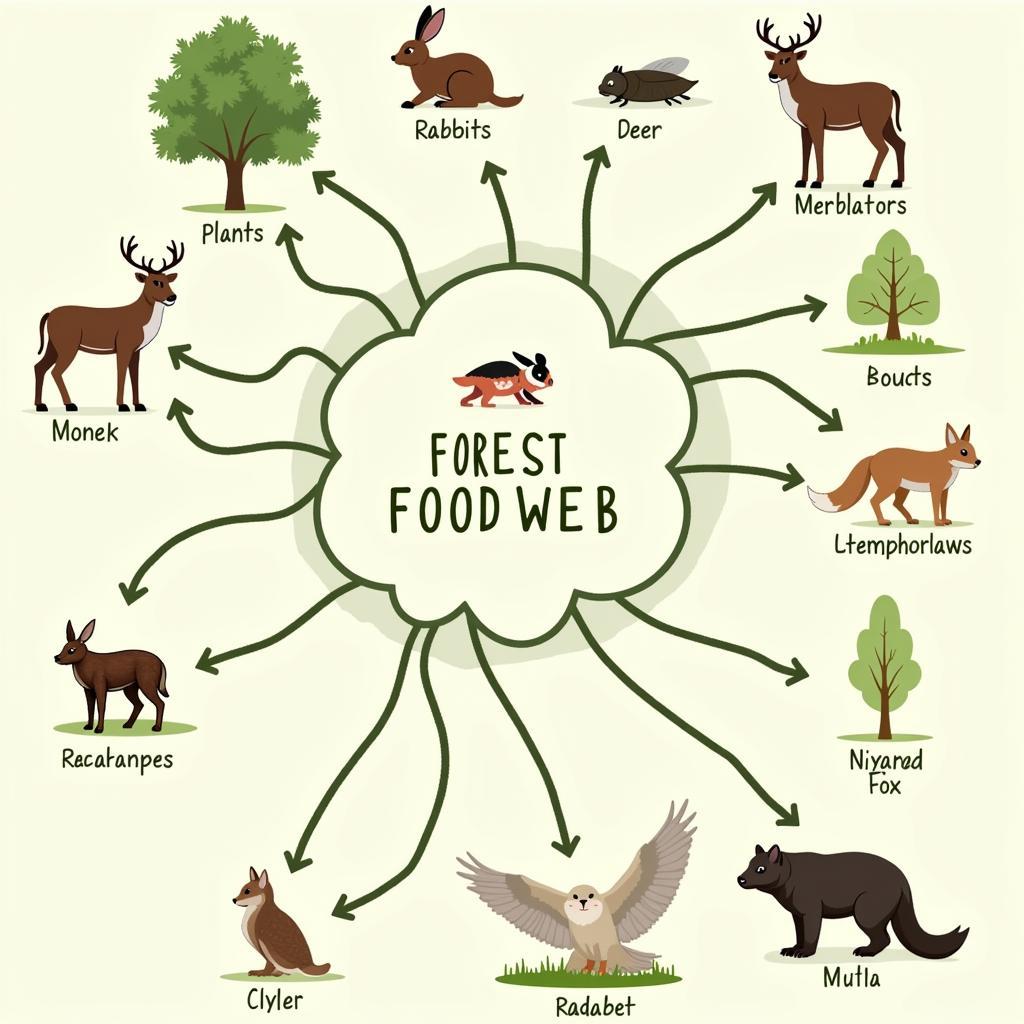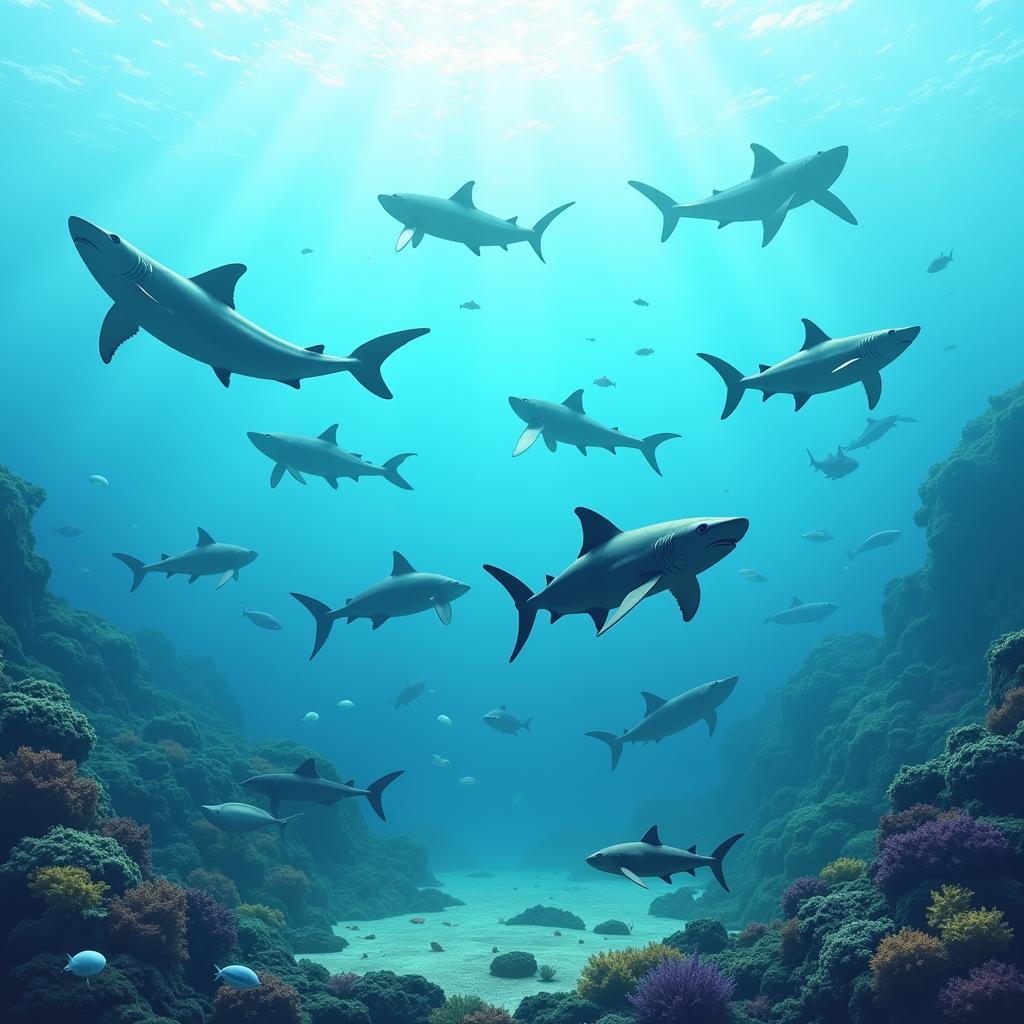The Food Web Project is a fascinating exploration of the interconnectedness of life, revealing how energy flows through an ecosystem. From tiny bacteria to apex predators, every organism plays a vital role. In this article, we’ll delve into the intricacies of food webs, exploring their structure, importance, and how human activities impact these delicate balances.
What is a Food Web Project?
A food web project typically involves researching and visually representing the complex relationships between producers, consumers, and decomposers within a specific ecosystem. It can range from a simple diagram illustrating a few key species to a complex network encompassing hundreds of organisms. Food webs differ from food chains, which show a linear progression of energy transfer, by illustrating the multiple feeding relationships that exist in reality. This makes food webs a more accurate representation of how ecosystems function. Understanding food webs is crucial for conservation efforts and managing natural resources effectively.
 Example of a Food Web Diagram
Example of a Food Web Diagram
The Importance of Food Webs
Food webs are essential for maintaining biodiversity and ecosystem stability. They reveal the intricate dependencies between species, highlighting how changes in one population can ripple throughout the entire system. For instance, the decline of a key prey species can impact the predator populations that rely on it for sustenance, potentially leading to cascading effects throughout the food web. Studying these connections helps us understand the resilience of ecosystems and predict the consequences of environmental changes. You might be interested in learning more about simple food project dog food.
How Human Activities Impact Food Webs
Human activities, such as habitat destruction, pollution, and overfishing, can have devastating consequences for food webs. These disruptions can lead to species extinction, imbalances in predator-prey relationships, and the overall degradation of ecosystems. Understanding these impacts is crucial for developing sustainable practices and mitigating the negative effects of human activities on the environment.
 Human Impact on a Marine Food Web
Human Impact on a Marine Food Web
Building Your Own Food Web Project
Creating a food web project can be a rewarding educational experience. Start by choosing an ecosystem you’re interested in, such as a forest, pond, or ocean. Research the different species that inhabit that ecosystem and their feeding habits. You can use resources like online databases, field guides, and scientific publications. Once you have gathered enough information, you can begin to construct your food web, using arrows to represent the flow of energy from one organism to another. Consider using different colors or symbols to represent different trophic levels (producers, primary consumers, secondary consumers, etc.). If you’re wrapping up your project, you’ll probably need some food wrap paper.
Tips for a Successful Food Web Project
- Focus on a specific ecosystem: This will make your research more manageable and allow you to delve deeper into the relationships between species.
- Use reliable sources: Ensure that the information you use is accurate and up-to-date.
- Be creative: Use visuals, diagrams, and interactive elements to make your project engaging and informative.
- Consider the impact of human activities: Include information on how human actions are affecting the food web you are studying.
Food Web Project: Frequently Asked Questions
Here are some frequently asked questions about food web projects:
- What is the difference between a food web and a food chain? A food chain shows a linear pathway of energy transfer, while a food web depicts the interconnected feeding relationships within an ecosystem.
- Why are food webs important? Food webs are crucial for maintaining biodiversity, ecosystem stability, and understanding the impact of environmental changes.
- How can I create a food web project? Choose an ecosystem, research the species and their feeding habits, and visually represent the connections using a diagram.
- What are some examples of human impacts on food webs? Habitat destruction, pollution, and overfishing can disrupt food webs and lead to negative consequences.
- Where can I find resources for my food web project? Online databases, field guides, scientific publications, and educational websites are excellent resources.
- What should I include in my food web project presentation? Clearly explain the different species, their roles in the ecosystem, and how they are interconnected. Discuss the importance of food webs and the impact of human activities.
- How can I make my food web project more engaging? Use visuals, diagrams, interactive elements, and real-world examples to capture your audience’s attention. For vibrant colors, consider using liquid gel food coloring.
In conclusion, the food web project is a valuable tool for understanding the complex relationships within ecosystems. By exploring these connections, we can gain a deeper appreciation for the delicate balance of nature and the importance of protecting our planet’s biodiversity. The food web reminds us that every organism, from the smallest microbe to the largest predator, plays a vital role in the interconnectedness of life. For your furry friends, consider non gmo cat food. What questions do you have about building your own food web project?
For further support, please contact us at Phone: 02437655121, Email: [email protected], or visit our address: 3PGH+8R9, ĐT70A, thôn Trung, Bắc Từ Liêm, Hà Nội, Việt Nam. We have a 24/7 customer service team ready to assist you.